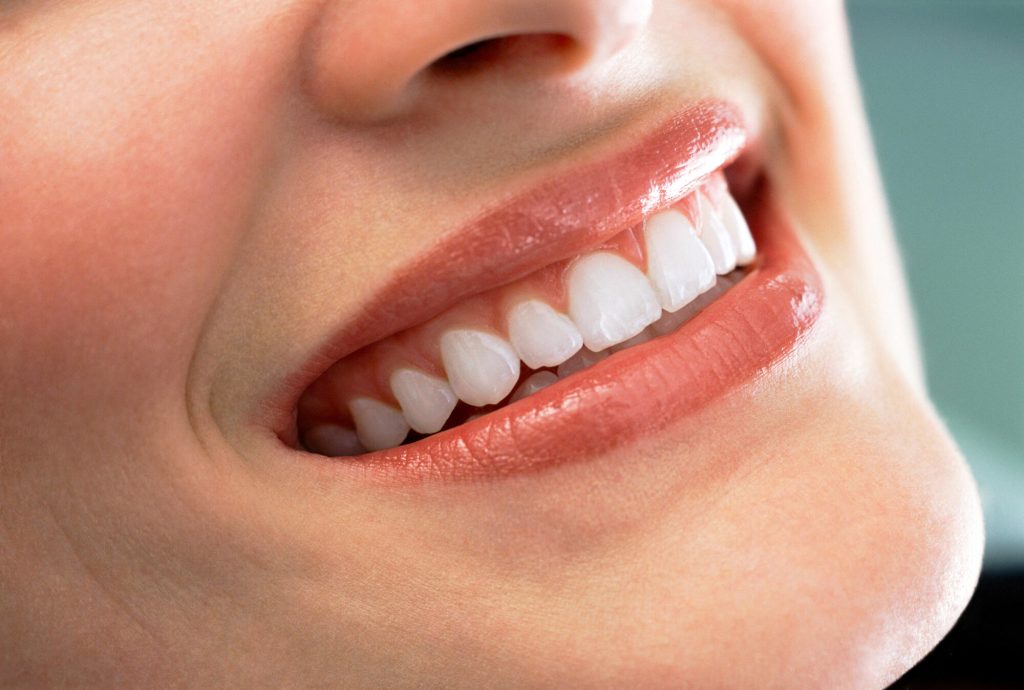A bright, confident smile can transform how you feel about yourself. However, some people feel self-conscious because their gums make their teeth appear uneven, small, or overshadowed. Gum contouring, also known as gum reshaping, is a cosmetic dental procedure that corrects these issues to create a more balanced, attractive smile.
In this beginner’s guide, you’ll learn everything you need to know about gum contouring-what it is, who it’s for, how it’s done, and how to take care of your gums afterward.
This step-by-step explanation will help you make an informed decision if you’re thinking about improving your smile through gum reshaping.
What Is Gum Contouring?
Before deciding on any dental treatment, it’s important to understand what gum contouring involves and how it can transform your smile. This section explains the basics of the procedure, what it targets, and why people choose to have it done.
Gum contouring is a cosmetic dental treatment that reshapes the gumline to improve the appearance of your teeth and overall smile. It can remove excess gum tissue, even out asymmetrical gumlines, or add tissue in areas where it has receded.
Modern techniques use lasers or precise dental tools to gently sculpt the gums, resulting in a natural, symmetrical look. Even a small adjustment can dramatically enhance your smile and confidence.
Why People Choose Gum Contouring
Understanding the reasons why patients choose gum contouring can help you see if it’s right for you. Many people seek this treatment for aesthetic reasons, but it can also have functional benefits for oral health.
To Fix a “Gummy” Smile
A “gummy” smile occurs when excessive gum tissue covers part of the teeth, making them look shorter. This can make the face appear unbalanced or cause self-consciousness. Gum contouring carefully removes the excess tissue to reveal more of the natural tooth surface, giving a cleaner and more proportionate look.
To Correct Uneven Gumlines
Uneven gums can make your teeth look mismatched in size or shape. This imbalance may draw attention away from your smile’s natural beauty. Contouring smooths out the gumline so that each tooth appears uniform, creating a harmonious appearance.
To Restore Gums After Recession
When gums recede, tooth roots may become exposed, leading to sensitivity or an aged look. Gum contouring can involve adding grafted tissue to rebuild the gumline. This not only improves appearance but also protects vulnerable areas from decay and sensitivity.
To Enhance Other Cosmetic Treatments
Gum contouring often complements other cosmetic treatments such as veneers, crowns, or whitening. By aligning the gums properly, these enhancements look more balanced and natural. It’s a small adjustment that can make a big difference in final results.
Who Is a Good Candidate for Gum Contouring?
Before getting this treatment, it’s essential to know whether you qualify. The right candidate will benefit the most from the procedure and heal more effectively.
You might be an ideal candidate for gum contouring if you:
- Feel unhappy about your smile
- Have healthy gums without infection or inflammation
- Suffer from gum recession
Dentists usually perform a thorough examination and may take X-rays to assess gum and bone health before proceeding. This ensures the best possible results and prevents complications.
The Step-by-Step Gum Contouring Process
Before your appointment, you might wonder what exactly happens during gum contouring. This section walks you through each phase, so you’ll know what to expect from consultation to recovery.
Step 1: Consultation and Planning
Your dentist will start with an in-depth consultation to discuss your goals. They may take images or digital impressions of your teeth to plan the reshaping accurately. You’ll also get to see a preview of how your gumline will look after treatment.
Step 2: Numbing the Area
Local anesthesia is used to numb the gums and surrounding area. This ensures you stay relaxed and pain-free throughout the procedure. You’ll remain awake, but the numbing prevents any discomfort while the dentist works.
Step 3: The Reshaping Process
During the reshaping, the dentist uses a laser or scalpel to sculpt the gumline. Lasers are often preferred because they seal blood vessels instantly, minimizing bleeding and swelling. The dentist carefully shapes the gums to achieve a balanced look that matches your facial structure.
Step 4: Finishing and Cleaning
Once the desired contour is achieved, the dentist smooths the tissue edges and cleans the area. This helps prevent infection and ensures faster healing. You might be invited to check your new smile in a mirror before the procedure is completed.
Step 5: Recovery and Healing
Minor tenderness and swelling are common after the treatment. Most patients recover quickly-especially those who undergo laser contouring. Your dentist will provide aftercare instructions, such as eating soft foods and avoiding alcohol or smoking during recovery.
What to Expect During Recovery
Healing plays a big role in the success of your gum contouring procedure. Here’s what you can expect and how to make the process as smooth as possible.
Immediate Aftercare
You may notice mild soreness or swelling for a few days after treatment. Your dentist might recommend pain medication or cold compresses to reduce inflammation. Keep your mouth clean using gentle brushing techniques and prescribed rinses.
Diet and Oral Hygiene
Stick to soft foods like soups, yogurt, and mashed vegetables while your gums heal. Avoid spicy, hot, or crunchy foods that might irritate sensitive tissue. Brush gently around the treated area and avoid using strong mouthwash unless recommended.
Healing Timeline
Most patients feel fully recovered within a week, though deeper reshaping may take longer. The gums typically stabilize in two to three weeks. Follow-up appointments allow your dentist to ensure healing is progressing properly.
Benefits of Gum Contouring
If you’re still deciding whether gum contouring is worth it, consider the advantages it offers. Beyond appearance, it can also promote oral hygiene and boost confidence.
Improved Aesthetics
By reshaping your gums, your teeth appear longer, cleaner, and more symmetrical. This small change can significantly improve your overall facial harmony. Many patients report that their smile looks naturally enhanced without looking artificial.
Enhanced Confidence
When your smile looks balanced, you naturally feel more confident. People who used to hide their teeth often start smiling freely again. Confidence in your appearance can positively influence social and professional interactions.
Healthier Gums
Removing excess tissue helps reduce areas where plaque and bacteria can accumulate. This makes brushing and flossing easier and more effective. As a result, your risk for gum disease decreases over time.
Complements Other Dental Work
Gum contouring provides the finishing touch to other cosmetic procedures. Treatments like whitening, veneers, or orthodontics look more natural when framed by an even gumline. It ensures your entire smile transformation feels complete.
Different Techniques Used in Gum Contouring
Not all gum contouring treatments are performed the same way. Depending on your needs, your dentist will choose the most suitable method.
Laser Gum Contouring
This method uses a dental laser to trim and seal gum tissue simultaneously. It reduces bleeding, speeds up healing, and minimizes discomfort. Patients often prefer this approach for mild to moderate reshaping because recovery is quick.
Traditional Surgical Contouring
For more extensive reshaping, dentists may use a scalpel to manually remove tissue. This method allows greater precision for complex cases. Although recovery may take a bit longer, results are equally effective and long-lasting.
Gum Grafting (for Recession)
When gums have receded, a small piece of tissue is grafted from another area of your mouth to rebuild the gumline. This protects tooth roots from exposure and sensitivity. It’s both a cosmetic and restorative solution that enhances oral health.
Combined Treatments
Some patients require a mix of contouring and grafting. Combining procedures ensures optimal results, particularly in cases of severe unevenness or gum loss. Dentists customize these combinations to achieve symmetry and long-term stability.
Understanding the Gum Reshaping Procedure in Detail
To fully appreciate the artistry behind gum contouring, it’s helpful to understand how precision and planning come together. The gum reshaping procedure requires both technical skill and aesthetic vision.
Dentists analyze your facial proportions, gum health, and tooth length before making any adjustments. They carefully decide how much tissue to remove or reposition for the most natural outcome. Advanced tools and digital planning ensure smooth, safe, and consistent results that blend seamlessly with your features.
Risks and Considerations
Every procedure comes with a few considerations, and gum contouring is no exception. Understanding the potential risks helps you feel more confident about your decision.
Gum Sensitivity
After treatment, gums can feel tender or sensitive to temperature. This usually subsides within a few weeks. Using toothpaste designed for sensitivity and avoiding overly hot or cold foods helps ease discomfort.
Infection
Though rare, infections can occur if aftercare isn’t followed properly. Keeping your mouth clean and attending follow-up visits reduces this risk. Your dentist may prescribe an antibiotic rinse or medication to prevent infection.
Over-Reshaping
Removing too much tissue can expose tooth roots or create uneven results. This is why choosing a skilled cosmetic dentist with experience is essential. Proper planning ensures natural and balanced results.
Gum Regrowth
Occasionally, some gum tissue may regrow slightly after laser treatments. This is typically minor and can be corrected easily if necessary. Regular dental checkups help maintain your new gumline’s shape.
How to Prepare for a Gum Contouring Appointment
Before your procedure, preparation helps ensure a smooth experience and quick recovery.
Your dentist will likely perform a full cleaning and evaluation to make sure your gums are healthy. If you have inflammation or gum disease, it must be treated first.
Discuss your expectations clearly so your dentist understands your desired results. You might also be asked to avoid medications that thin the blood to reduce bleeding risk during treatment.
Post-Treatment Care Tips
After your gum contouring, gentle care ensures quick healing and long-lasting results.
Gentle Brushing
Brush carefully using a soft-bristled toothbrush to avoid irritating treated areas. Use circular motions and avoid pressing hard against your gums. This prevents bleeding and encourages proper healing.
Rinse Carefully
Saltwater rinses or prescribed antibacterial mouthwashes help prevent infection. Avoid alcohol-based rinses, as they can cause stinging or dryness. Rinsing after meals keeps the mouth clean and fresh.
Stick to a Soft Diet
Choose foods that are easy to chew, like oatmeal, smoothies, or mashed potatoes. Avoid crunchy snacks and seeds that could injure healing tissue. Staying hydrated also supports tissue recovery.
Manage Discomfort
Mild pain is normal for the first few days. Over-the-counter medication or dentist-approved gels can help. Cold compresses applied to the face may reduce swelling and soreness.
Combining Gum Contouring With Other Treatments
Gum contouring is often most effective when paired with other cosmetic or restorative dental treatments. Combining procedures allows your dentist to address both the structure and appearance of your smile, creating a balanced, polished, and healthy result.
Gum Contouring and Veneers
When patients receive dental veneers, gum contouring can ensure that the gums frame each veneer perfectly. A smooth and even gumline helps the veneers look more natural and symmetrical. Without contouring, the gumline might still appear uneven, even if the veneers themselves are flawless.
Gum Contouring and Teeth Whitening
If you plan to whiten your teeth, it’s best to contour your gums first. Reshaping the gums ensures that whitening gel or light covers the correct surfaces evenly. Once the gumline is balanced, the brighter color of your teeth will appear more uniform and aesthetically pleasing.
Gum Contouring and Crowns
Dental crowns are often used to restore damaged or worn teeth. Contouring ensures that the gum tissue fits properly around the new crown, preventing gaps and creating a natural transition between gum and tooth. This also helps maintain gum health by reducing plaque buildup near the gumline.
Gum Contouring and Orthodontics
For patients who have had braces or clear aligners, gum contouring is sometimes the final touch to complete their smile. After teeth are aligned, uneven gums can still make the smile appear imbalanced. Gentle reshaping defines the new tooth positions, enhancing the visual results of orthodontic work.
Take the First Step Toward a Confident Smile
Gum contouring is a safe, effective, and lasting way to enhance your smile’s balance and beauty. Whether you’re addressing a gummy smile or rebuilding recessed gums, this procedure delivers noticeable results and renewed confidence.
If you’re ready to learn more, talk to a qualified cosmetic dentist about a gum reshaping procedure today. They’ll help you understand your options, design a personalized plan, and guide you toward achieving the healthy, radiant smile you deserve.
Got questions? We’ve got answers! Check out our blog for loads of interesting and helpful content today!







